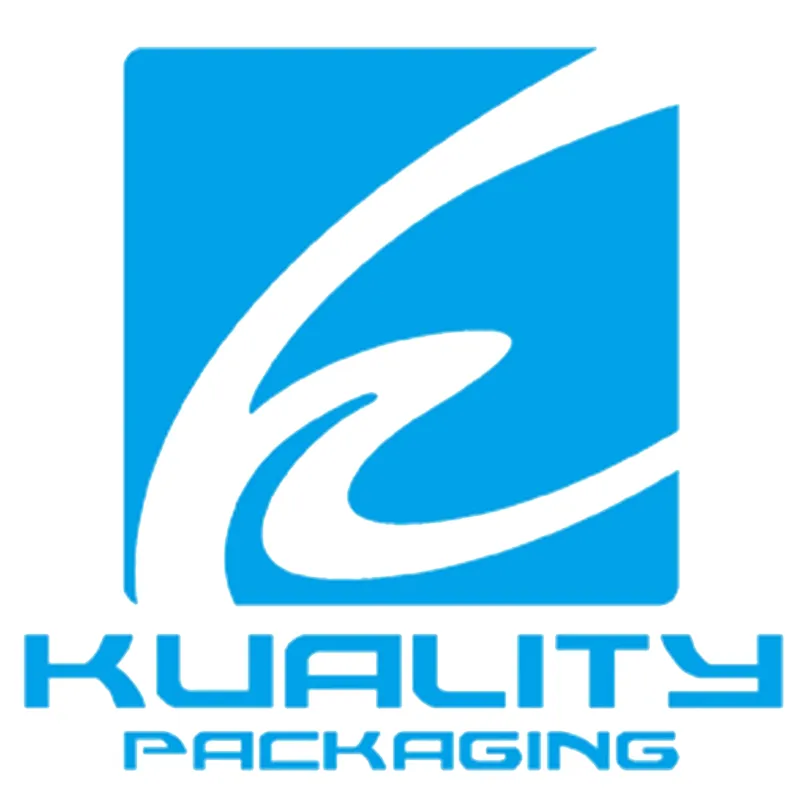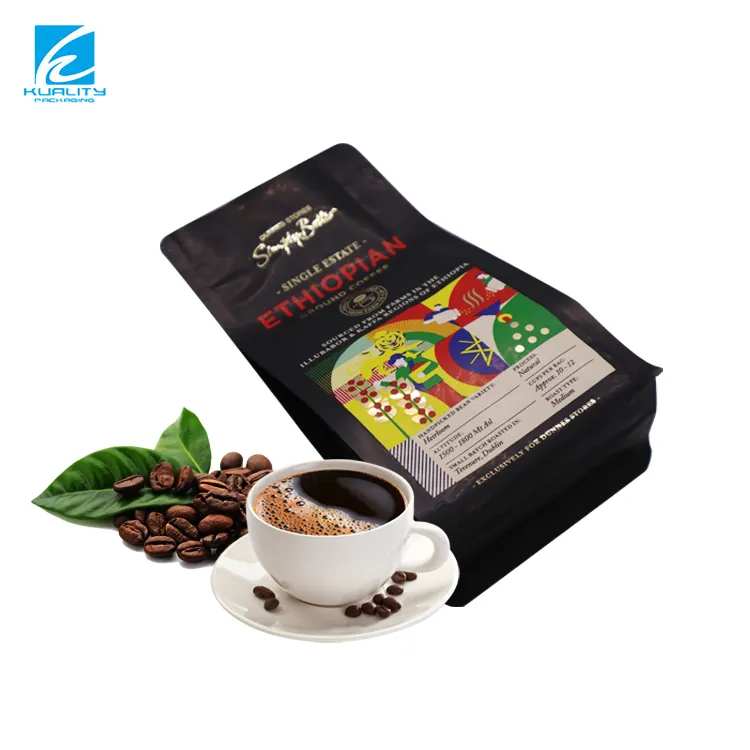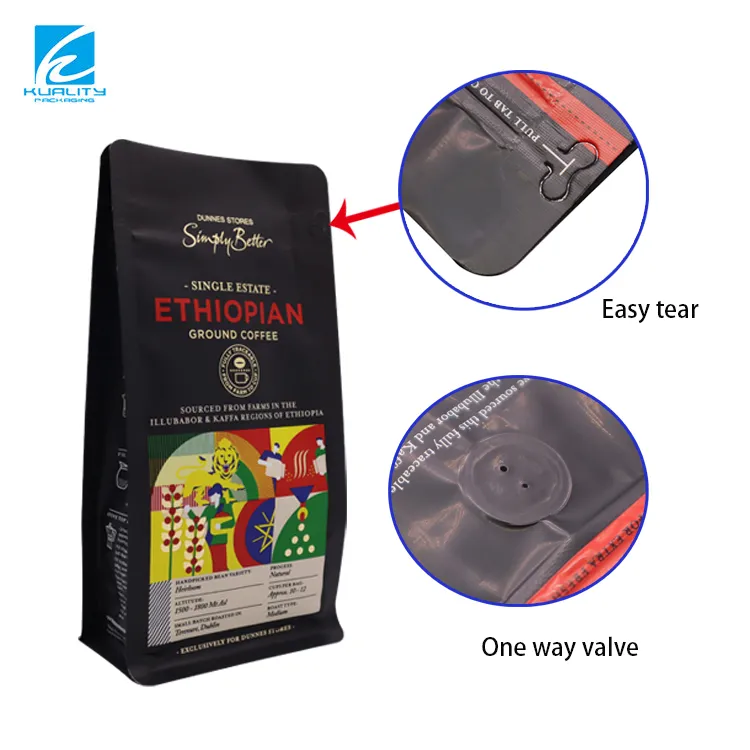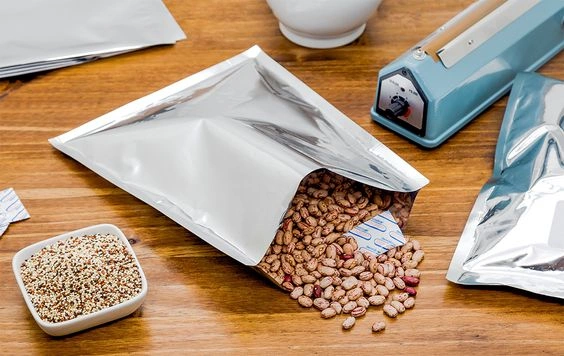
Are you trying to choose the right packaging material for your products? Packaging not only needs to look good, but it also needs to protect the perishable products within it, extending shelf life and freshness. In addition, you need to consider various factors: how long will the product be stored? Will it be stored in a climate-controlled environment or a stuffy warehouse? Does the packaging need multiple layers of protection, or just one?
In the fast-paced modern world, flexible packaging plays a key role in industries such as food, beverage, pharmaceuticals, and household chemicals due to its advantages of being lightweight, economical, and a variety of designs. As an important bridge between producers and consumers, the priority of flexible barrier packaging is to protect products from the external environment and ensure the contents’ freshness, safety, and integrity. All of this is possible without its core characteristic – excellent barrier properties.
You may have a quality product, but your customers are unaware of this little feature. The only way to attract them is through unique, quality packaging. This is where flexible barrier packaging materials come into play, especially in the food packaging industry. Next, 惠洋包装 will present the following ultimate guide to barrier packaging.
What Is Flexible Barrier Packaging?
You can certainly see this food service packaging material everywhere, so what is flexible barrier packaging? Barrier packaging is any product that prevents sensitization to environmental factors such as oxygen, moisture, light, and contaminants. This barrier can be thought of as a firewall that prevents the movement of gases or liquids. Simply put, flexible barrier packaging is made from a packaging material that provides a high barrier between the product inside and oxygen, moisture, light, and gases. In some cases, barrier packaging can also act as an aroma barrier, keeping products fresh and preventing odors and smells inside the plastic bag.
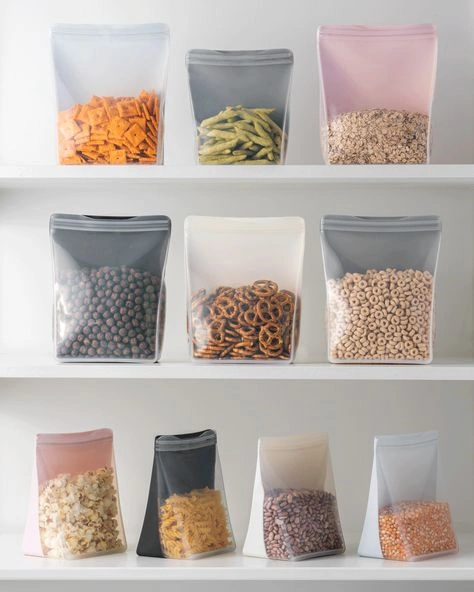
Factors Affecting Flexible Barrier Packaging Performance
素材の選択
- Polyethylene (PE): PE material has good properties and environmental friendliness, it goes without saying that it can be used in a wide range of applications in several fields. If there is a need for a material that is non-toxic, odorless, corrosion-resistant, heat-resistant, and environmentally friendly, then PE is a choice that people will marvel at. As a result, PE is often used as an inner or outer layer of packaging, or in combination with other materials that have better barrier properties to enhance the overall barrier performance of the package.
- Polyester (PET): Polyester fiber is popular for its efficiency and affordability. Made from high-quality film, it is ideal for applications such as packaging machine parts, food products, or bags with windows. Polyester fiber also has a good weight-to-strength ratio and has its own barrier properties. Its dimensional stability is impressive and it is often heat and tear resistant.
- Aluminum Foil Coated Film: This flexible barrier packaging is used when maximum shelf life or improved barrier properties are required. When used as part of a barrier laminate structure, aluminum foil is essentially a flexible “aluminum can”. Aluminum has a very high barrier to moisture and oxygen, down to 0.0006 grams/24 hours. This is an extremely low mobility, which creates an amazing barrier.
- EVOH (Ethylene Vinyl Alcohol Copolymer): EVOH is a high-performance barrier resin, especially in terms of gas barrier properties. Its ability to block oxygen far exceeds that of conventional plastic materials, almost reaching the level of aluminum foil. EVOH’s barrier properties are affected by its ethylene content; the higher the ethylene content, the better the material can be processed, but the gas barrier performance decreases accordingly. Therefore, EVOH is often embedded in multilayer composites as an intermediate barrier layer in food and pharmaceutical packaging, which requires extremely high barrier requirements, as well as in aseptic packaging and other fields.
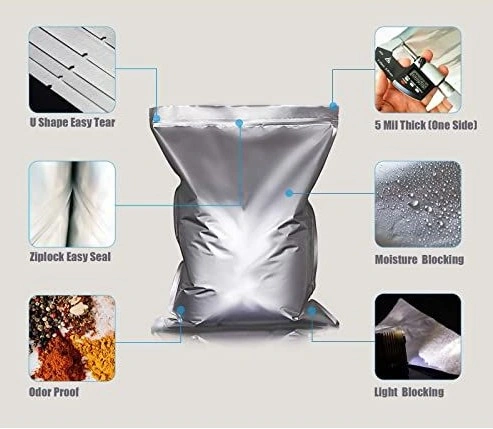
Structural Designs
- Multi-layer construction: Multi-layer construction is usually made up of a combination of different materials, such as plastic layers, aluminum foil layers, and coatings.PET/AL/PE construction, with this multi-layer design, achieves good barrier properties. Each layer provides specific barrier properties, such as moisture, oxygen, and light protection, combining to improve overall performance.
- Interlayer adhesion: High-performance adhesives ensure a strong bond between the layers, preventing layer separation and maintaining the integrity of the barrier properties. The manufacturing process requires precise control of temperature, pressure, and other parameters to ensure the uniformity and stability of interlayer bonding.
- Heat seal design: Selecting the right heat seal material such as LDPE (Low-Density Polyethylene) or PP (Polypropylene) ensures the sealing of the heat seal area. The sealing strength determines the sealing performance of the bag, and the high-strength heat seal can prevent the penetration of gas and moisture.
- Bag design: Different bag types (e.g. stand-up pouches, flat-bottomed pouches, self-sealing pouches) have different sealing effects and barrier properties. The width and type of sealing at the edge (e.g. heat seal, ultrasonic seal) affect the overall barrier performance.
- Sealing technology: The use of appropriate sealing technology (e.g. heat sealing, cold sealing, laser sealing) can improve the uniformity and sealing performance of the seal.
- Shape and size: Optimize package shape and size to reduce the surface area exposed to the outside environment, thereby reducing the permeation of gases and moisture. For example, the overall strength and barrier properties of a package can be improved by designing unique folds and reinforced edges.
- Ventilation holes and valves: Some flexible packages need to breathe, such as coffee bags, and we utilize one-way valves that can release internal gases without allowing outside air to enter, keeping the internal environment stable. Ensure that the packaging in the ventilation at the same time does not affect the barrier performance.
What aspects should be considered when looking for food packaging resources?
Several factors need to be considered when choosing packaging materials. First, if the product has a short shelf life, low or medium-barrier plastic films are recommended because these products are usually low-value retail items that are consumed quickly and the economy is a major consideration. For products with a longer shelf life, high-barrier materials are the best choice; they reduce food loss and waste and keep products fresh for a long time. In addition, for moisture-sensitive products (e.g., nutritional blends and dry food ingredients), enhanced barrier plastic films such as high-density polyethylene and aluminum foil laminates should be used to effectively prevent moisture from entering the bag. Products that are sensitive to oxygen (e.g., potato chips) should use oxygen barrier packaging materials to prevent oxygen from entering the bag, thereby extending the shelf life of the product.
Flexible barrier packaging materials should also have sufficient physical capacity to carry the product and resist the effects of external factors such as light, dust, heat, and air. In addition, the packaging material should be easy to replenish at short notice to avoid disrupting production and sales. Other factors to consider include material durability, price, and suitability to ensure that the best material for your packaging needs is selected within your budget.
Flexible Barrier Packaging Test Methods and Standards
The evaluation of the barrier performance of flexible packaging is mainly carried out by professional instruments, including the determination of key indicators such as oxygen transmission rate (OTR) and water vapor transmission rate (WVTR). Commonly used testing methods include the differential pressure method, isobaric method, electrolytic sensor method, and so on. Each of these methods has its advantages and disadvantages and is suitable for different types of materials and application scenarios. Both the International Organization for Standardization (ISO) and the American Society for Testing and Materials (ASTM) have developed relevant testing standards to provide a unified evaluation system for enterprises and research institutions.
Understanding the common measurement methods and standards for these barrier packaging materials can be confusing, which is why it’s so important to work with a professional and experienced packaging company like Huiyang Packaging. We’ll walk you through the various oxygen and moisture barrier properties to ensure that the packaging materials you choose have the barrier properties you need.
結論として
We provide quality food service packaging that allows your business to thrive. In the face of growing market demand and ever-increasing environmental standards, and constantly seeking new materials, innovative technologies, and improved packaging design solutions is the way forward for the flexible packaging industry. Through unremitting technological innovation, the flexible packaging industry will not only strengthen the protection of product quality, but also as a leader, promote the packaging field to the green, sustainable direction of transformation, and jointly create an environmentally friendly, sustainable future.
Product packaging has a huge impact on a customer’s purchasing decision. Studies have shown that consumers make over 70% of their purchasing decisions at the point of purchase, and the main factor that determines whether they choose your product or leave is your packaging.
Flexible barrier packaging comes in many forms and can be customized to meet the needs of your audience. From medical device packaging to food service packaging, from cosmetics to alcoholic beverages – it’s compatible with a wide range of products, making it the packaging solution of choice for many manufacturers.
If you’re not sure which packaging solution you need for your product, we’re happy to help. Huiyang Packaging Manufacturer offers free samples and designs, but not only that, it also excels in the company’s ability to perform, including customization services and more – contact us today!
